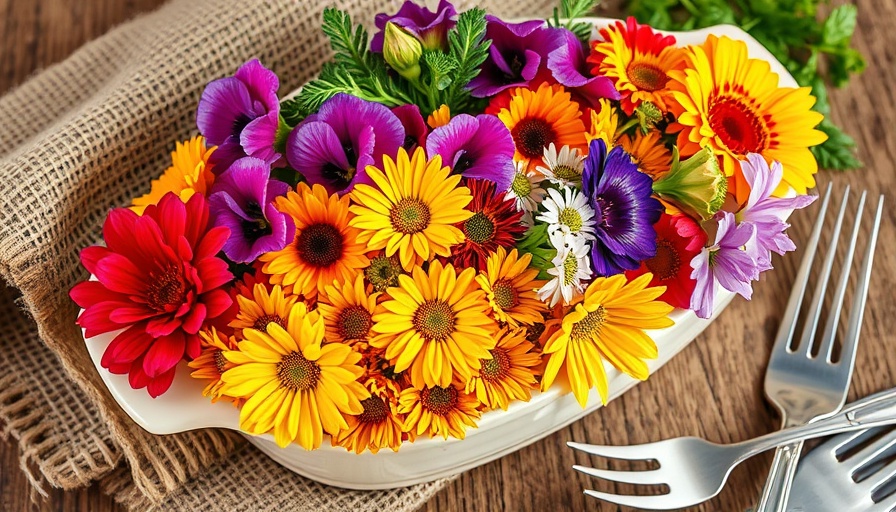
Unveiling the Delight of Edible Flowers
When we think about gardens, we often imagine vibrant vegetables and flourishing herbs, yet there lies a wonderful world of colorful and edible blooms awaiting discovery! Walking through nature or your backyard, it’s easy to overlook the tasty petals that can enrich your meals, provide a burst of color, and transform your dishes into culinary masterpieces. The joy of harvesting and using edible flowers opens doors not only to flavors but also to health benefits and creative cooking.
Ensure Safe and Delicious Edible Flowers
Before diving into the delightful world of edible flowers, it's vital to understand certain considerations. Identifying plants correctly is crucial as not all blooms are safe; some may be toxic or cause allergic reactions. Always harvest flowers from organic gardens—those without chemical sprays or pesticides. It’s also wise to sample a bloom before using it, checking both taste and your body's reaction to it.
Harvesting at the Right Moment: Timing is Key
Your blooms will only be at their best when harvested at the right time. Flowers such as nasturtiums, violets, and marigolds should be picked when they are fully open for optimal flavor. Morning, after the dew has dried, is the best time for harvesting. This ensures maximum freshness while avoiding the midday heat that can wilt delicate petals.
The Art of Harvesting and Processing
Each type of flower has its unique harvesting technique. For some blooms like daisies, you'll want to pinch the flower head off gently. For others, like zinnias, cut them with a pair of shears. Pesticide-free is non-negotiable here—always check for insects and wash flowers gently to remove any bugs before use. If you plan to use flowers for decorative purposes, taking care to select the most aesthetically pleasing, intact blooms is crucial.
Storage Strategies for Fresh Blooms
To maximize the usability of your edible flowers, proper storage is essential. Store them in a breathable container in the fridge, separated from fruits and vegetables. It's best to use them within a week for optimal freshness and flavor. Remember that not all edible flowers are meant for long storage, so consume them soon after harvesting.
Culinary Inspiration: How to Use Edible Flowers
Now that you've harvested the best blooms, how do you integrate them into your meals? Edible flowers can serve both aesthetic and flavor purposes. Toss them into salads for a pop of color, use them to decorate cakes, or infuse syrups for beverages. Flowers like lavender or elderflower can even be used to make delicious teas! Get creative with your floral cuisine and delight your guests with visually stunning dishes.
Gardeners: Nurturing Edible Flowers in Your Home
Integrating edible flowers into your garden is not only rewarding but also enhances biodiversity. When planting, consider companion planting, which can attract pollinators like bees and butterflies to your garden. Companion herbs such as basil and nasturtiums can coexist beautifully, supporting a healthy ecosystem while improving yields in your vegetable garden. The aesthetic appeal of these flowers can also elevate your flower garden's design while contributing to a dynamic and sustainable environment.
The Health Benefits of Edible Flowers
Beyond culinary uses, edible flowers are packed with vitamins, antioxidants, and unique flavors that can enhance your well-being. Flowers like calendula may have anti-inflammatory properties, while others like pansies and hibiscus have been linked to various health benefits. Incorporating these flowers not only spices up your plates but also invites wholesome nutrition into your diet.
Final Thoughts: Explore and Enjoy
The journey into the world of edible flowers enriches your meals with color, flavor, and health benefits. Take the plunge by exploring local flora on hikes or creating a dedicated space in your garden for these delightful plants. Whether you're cooking for a feast or simply adding an affectionate touch to daily meals, learning about edible flowers opens up an endless horizon of culinary creativity.
 Add Row
Add Row  Add
Add 




Write A Comment